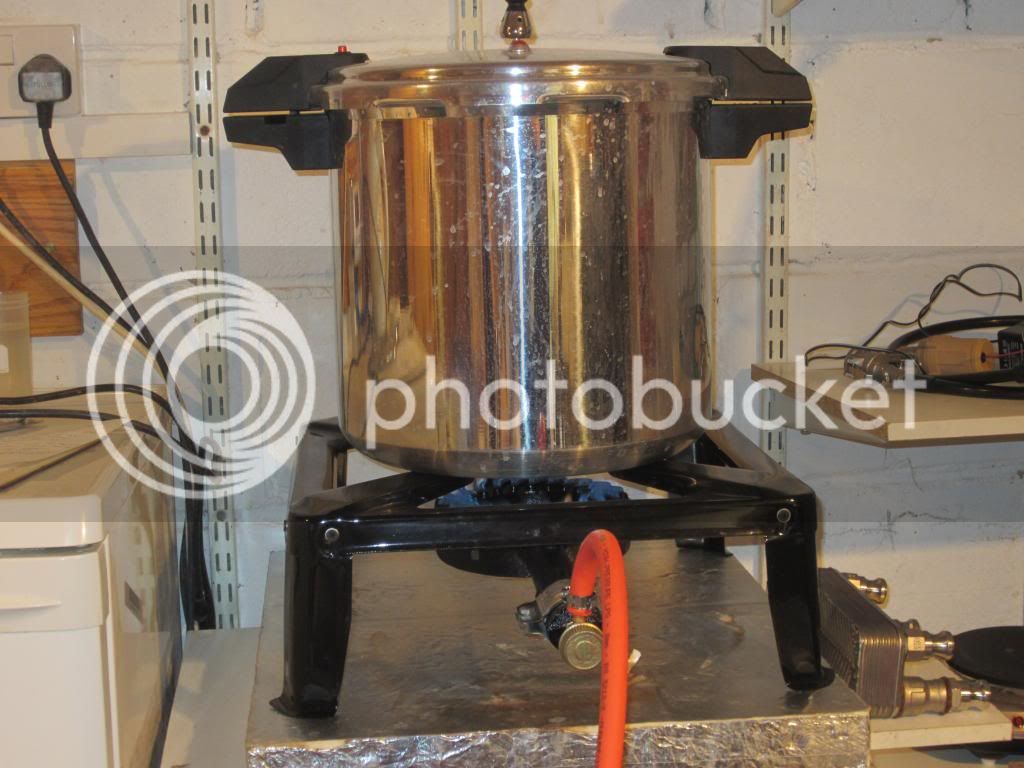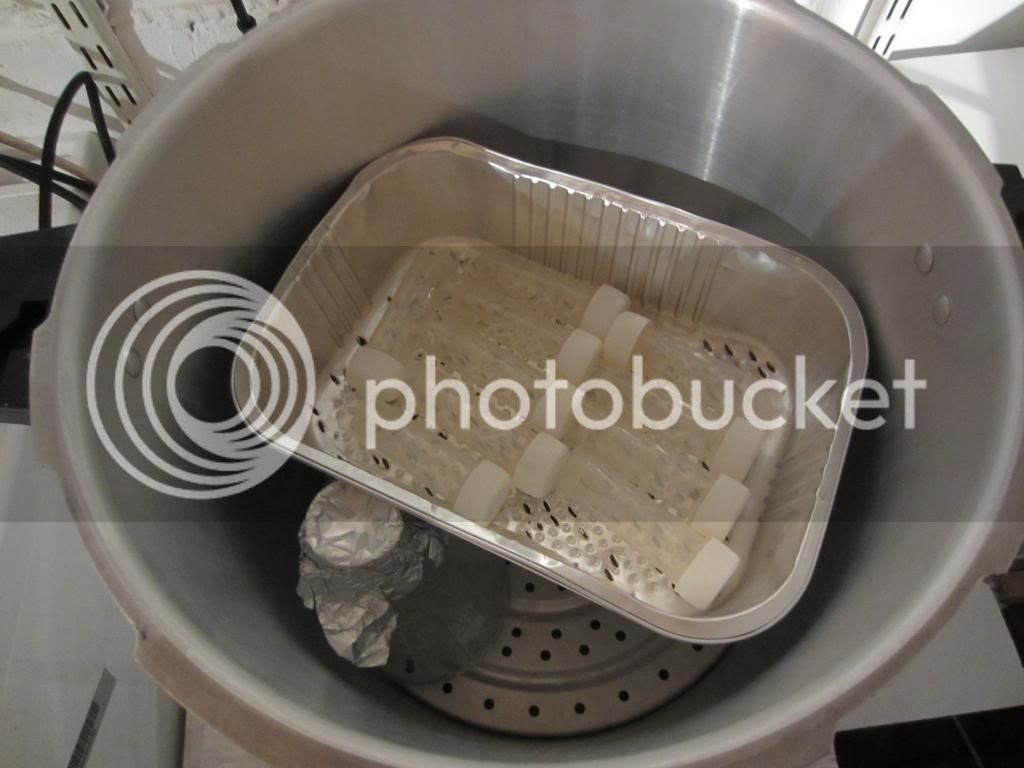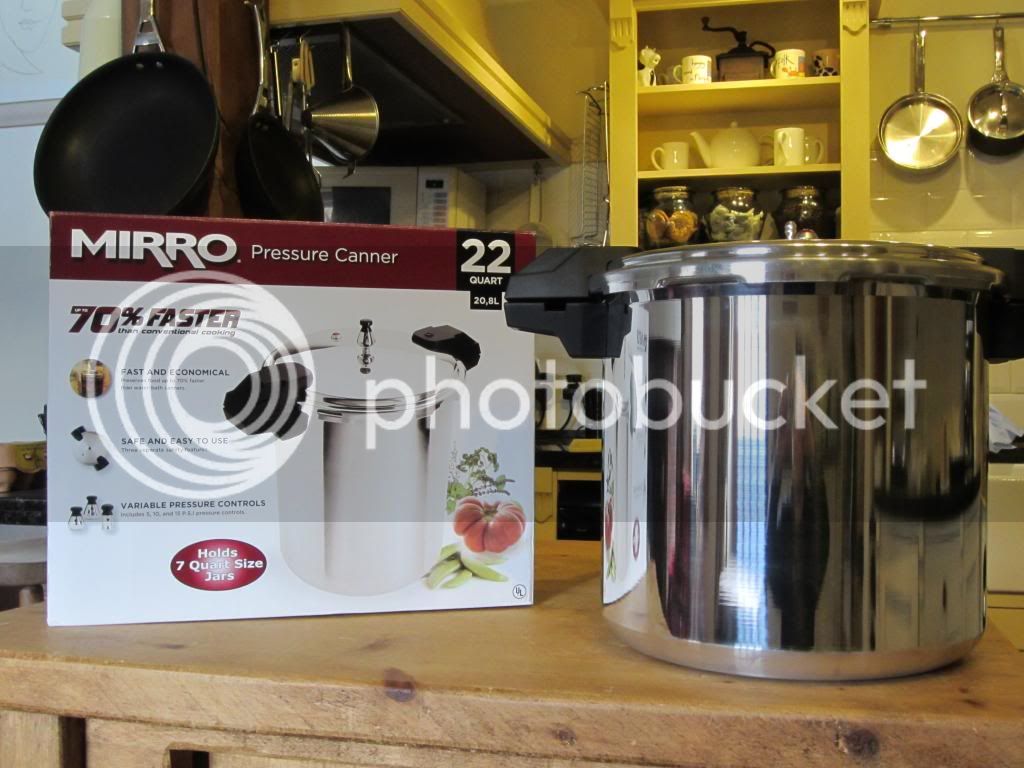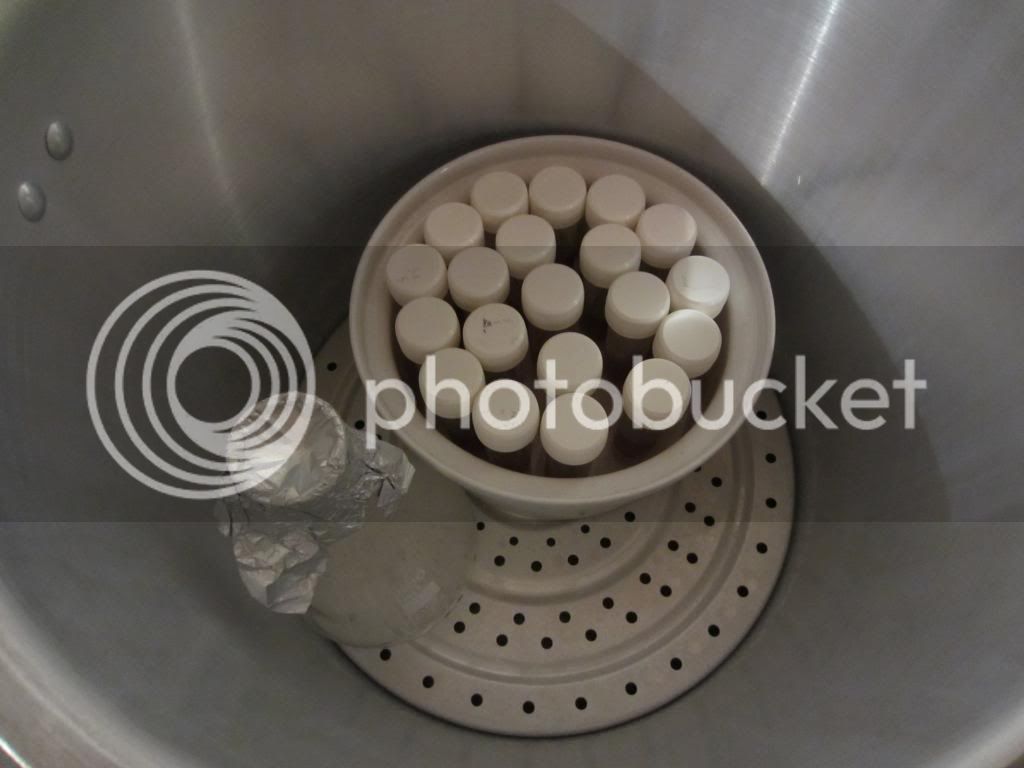You are using an out of date browser. It may not display this or other websites correctly.
You should upgrade or use an alternative browser.
You should upgrade or use an alternative browser.
Yeast and cell culturing
- Thread starter dennisdk2000
- Start date

Help Support The Homebrew Forum:
This site may earn a commission from merchant affiliate
links, including eBay, Amazon, and others.
Lucy said:you could always buy a very fast hamster and turn its wheel into a DIY centrifuge :hmm:
sorry, i'm not being very helpful am I..
Actually you are, because joking apart, you're showing that if you are trying to go about preserving yeast for a long time, then doing it properly is just not easy and really requires kit that is quite a bit above the average home brewer.
Lucy
New Member
- Joined
- Aug 29, 2013
- Messages
- 10
- Reaction score
- 0
Maybe so, however if you give it a go you might get a reasonable out of freeze viability just using a simplified method, definitely worth a shot though,... :wha:
The stuff I used to do was v.anal as the cells were manufacturing cell lines i.e. these were the fermentation starter cultures that ended up producing the actual drug that went into patients... so it was all very strict.
The stuff I used to do was v.anal as the cells were manufacturing cell lines i.e. these were the fermentation starter cultures that ended up producing the actual drug that went into patients... so it was all very strict.
Lucy, thanks for the feedback - and this info might be very helpful. I've been trying to get in touch with someone who has experience with cell culturing as I had questions about the purity/quality of reagents used and how much it impacts on the results. I worked briefly as a general technician in a research lab, never did cell culturing, but did handle ordering of certain cell culture items, so have a vague idea about it all, but only vague!
Once I get a little time, I'm going to type up the protocols for freezing yeast cells at -20 and -80 as set out in Yeast by White and Zainasheff, maybe you could offer an opinion on them? I'd love to play about with all this, but really short on time at the moment!
Anyway, cheers for your input!
Dennis
Once I get a little time, I'm going to type up the protocols for freezing yeast cells at -20 and -80 as set out in Yeast by White and Zainasheff, maybe you could offer an opinion on them? I'd love to play about with all this, but really short on time at the moment!
Anyway, cheers for your input!
Dennis
Before anyone goes out and buys a -80C Freezer (Available from Scientific Lab Supplies) and a centrifuge (same place) there are other options that allow you to work very effectively
This commercial and very easy to use kit The cost was about £1 per vial (+VAT) and there are 25 beads in each vial so cost per unit of yeast is about 5p. It would probably need to be split amongst several enthusiasts. (I'm in the process of finding out minimum order quantities and new pricing). All one needs is a sterile loop to inoculate the vial with and the ability to pour off the supernatant (aspirate is their term). Come starter time just aseptically remove one bead into 2ml of wort for a couple of days and then step up as normal.
I know that yeast keeps at -18C in this environment for at least 3 years.
While I have plates, slants and agar, and make my own culture media, this really is a great solution to keeping yeast for a long time without the hassle of glycerol and DMSO (and centrifuges). I know that Jim stores yeast in large quantities in the freezer, but will say that I have not found the method to work well for me . . . in fact even using small quantities of yeast in glycerol didn't work. I have had great success using the sterile distilled water method in the fridge, but still look for simplicity.
This commercial and very easy to use kit The cost was about £1 per vial (+VAT) and there are 25 beads in each vial so cost per unit of yeast is about 5p. It would probably need to be split amongst several enthusiasts. (I'm in the process of finding out minimum order quantities and new pricing). All one needs is a sterile loop to inoculate the vial with and the ability to pour off the supernatant (aspirate is their term). Come starter time just aseptically remove one bead into 2ml of wort for a couple of days and then step up as normal.
I know that yeast keeps at -18C in this environment for at least 3 years.
While I have plates, slants and agar, and make my own culture media, this really is a great solution to keeping yeast for a long time without the hassle of glycerol and DMSO (and centrifuges). I know that Jim stores yeast in large quantities in the freezer, but will say that I have not found the method to work well for me . . . in fact even using small quantities of yeast in glycerol didn't work. I have had great success using the sterile distilled water method in the fridge, but still look for simplicity.

£11.95
£14.99
FOR THE LOVE OF HOPS (Brewing Elements): The Practical Guide to Aroma, Bitterness and the Culture of Hops
Amazon.co.uk

£11.81
Digital Temperature Watch Heating Thermometer Home Brewing Tools for Wine Bottle
B&D DIRECT STORE

£15.96
£16.99
The Brew Your Own Big Book of Clone Recipes: Featuring 300 Homebrew Recipes from Your Favorite Breweries
Amazon.co.uk

£63.25
Sanitary clamp 1.5" (38mm) OD50.5mm Sanitary Tri-Clamp 90-Degree Pipe With Nipple And Electronic Thermometer, Stainless Steel 304 Home brewing(Without Thermometer)
DAN CHENG XIAN PENG SHI DA SHANG MAO DIAN

£7.00 (£70.00 / kg)
£7.25 (£72.50 / kg)
Youngs Multi Purpose Dried Active Yeast
TMJ.DISTRIBUTIONS

£14.25
£18.99
How to Brew: Everything You Need to Know to Brew Great Beer Every Time
Amazon.co.uk

£6.99
Stevenson Reeves Triple Scale Hydrometer (S1011) For Home Brewing and Winemaking
Medi Exchange

£17.95
£24.95
DIAH DO IT AT HOME Fermenter 30l Fermentation Bucket with Tap, Airlock, Lid, and Bung, Homebrew Wine Making
do-it-at-home

£9.99 (£199.80 / kg)
Lalvin EC-1118 Wine Yeast (10 Pack) - Champagne Yeast - Make Wine Cider Mead Kombucha At Home - 5 g Sachets - Saccharomyces cerevisiae - Sold by CAPYBARA Distributors Inc.
CAPYBARA Distributors Inc. (UK)

£11.95
£14.99
Brew it Yourself: Make Your Own Beer, Wine, Cider and Other Concoctions
ST Bookstores

£8.99 (£158.55 / kg)
Fermaid O Yeast Nutrient - 2 oz (56.7 g) - Make Wine Cider Mead Kombucha at Home - Sold by CAPYBARA Distributors Inc.
CAPYBARA Distributors Inc. (UK)

£7.99
£14.99
Craft Brew: 50 homebrew recipes from the world's best craft breweries
Sarahs Bookshop UK

£11.95
£14.99
WATER COMPREHENSIVE GUIDE (Brewing Elements): A Comprehensive Guide for Brewers
Amazon.co.uk

£11.08
Banziaju Wine Making Supplies, 18" Auto Siphon Hose For Water Homebrew Siphon Pump With Tubing And Clamp Clear Wine Siphon For Beer Wine Making Kit
Jian Shi Xian Chao Mei Shang Mao You Xian Gong Si

£38.63 (£0.39 / 100 ml)
Cider Making Kit - Full Starter - 10L/2 Gallon/20 Pints Home brew Beer Ale Lager
247 Homebrew
Aleman said:This commercial and very easy to use kit The cost was about £1 per vial (+VAT) and there are 25 beads in each vial so cost per unit of yeast is about 5p. It would probably need to be split amongst several enthusiasts. (I'm in the process of finding out minimum order quantities and new pricing).
You can put me on your list of enthusiasts. :thumb:
Finally, the freezing protocols as promised - taken from Yeast by Chris White and Jamil Zainasheff.
Procedure for -80°C storage:
1. Pick a culture and grow it in 10mL of YPD medium for 48 hours. Growth is done before this time, but the yeast build glycogen reserves after growth.
2. Move the 10mL culture to a 4°C environment, and hold for another 48 hours, to encourage the yeast to build trehalose.
3. Under the hood or near a flame re-suspend the the yeast in the 10mL culture and transfer 1mL to a sterile 1.5mL microcentrifuge tube. Label the tube with the strain name, number, and date.
4. Centrifuge the tubes for 3 to 4 minutes. Remove carefully and place in a rack under the hood.
5. Carefully discard the liquid, saving the yeast pellet at the bottom.
6. Add 1mL of a 15% glycerol, 85% YDP medium to the tube, and gently re-suspend the yeast with a sterile pipette.
7. Seal tightly, wrap in Parafilm, and place in appropriate boxes within the -80°C freezer.
Procedure for -20°C storage:
1. Pick a culture and grow it in 10mL of YPD medium for 48 hours. Growth is done before this time, but the yeast build glycogen reserves after growth.
2. Move the 10mL culture to a 4°C environment, and hold for another 48 hours, to encourage the yeast to build trehalose.
3. Under the hood or near a flame re-suspend the the yeast in the 10mL culture and transfer 1mL to a sterile 1.5mL microcentrifuge tube. Label the tube with the strain name, number, and date.
4. Centrifuge the tubes for 3 to 4 minutes. Remove carefully and place in a rack under the hood.
5. Carefully discard the liquid, saving the yeast pellet at the bottom.
6. Prepare a solution of 50% glycerol and 50% YPD medium.
7. Add 1g/L ascorbic acid to the solution.
8. Add 1mL of the solution to the tube, and gently re-suspend the yeast with a sterile pipette.
9. Seal tightly, wrap in Parafilm, place the tubes upright inside a small Styrofoam box and then place the box into the freezer.
Any thoughts?
Dennis
Procedure for -80°C storage:
1. Pick a culture and grow it in 10mL of YPD medium for 48 hours. Growth is done before this time, but the yeast build glycogen reserves after growth.
2. Move the 10mL culture to a 4°C environment, and hold for another 48 hours, to encourage the yeast to build trehalose.
3. Under the hood or near a flame re-suspend the the yeast in the 10mL culture and transfer 1mL to a sterile 1.5mL microcentrifuge tube. Label the tube with the strain name, number, and date.
4. Centrifuge the tubes for 3 to 4 minutes. Remove carefully and place in a rack under the hood.
5. Carefully discard the liquid, saving the yeast pellet at the bottom.
6. Add 1mL of a 15% glycerol, 85% YDP medium to the tube, and gently re-suspend the yeast with a sterile pipette.
7. Seal tightly, wrap in Parafilm, and place in appropriate boxes within the -80°C freezer.
Procedure for -20°C storage:
1. Pick a culture and grow it in 10mL of YPD medium for 48 hours. Growth is done before this time, but the yeast build glycogen reserves after growth.
2. Move the 10mL culture to a 4°C environment, and hold for another 48 hours, to encourage the yeast to build trehalose.
3. Under the hood or near a flame re-suspend the the yeast in the 10mL culture and transfer 1mL to a sterile 1.5mL microcentrifuge tube. Label the tube with the strain name, number, and date.
4. Centrifuge the tubes for 3 to 4 minutes. Remove carefully and place in a rack under the hood.
5. Carefully discard the liquid, saving the yeast pellet at the bottom.
6. Prepare a solution of 50% glycerol and 50% YPD medium.
7. Add 1g/L ascorbic acid to the solution.
8. Add 1mL of the solution to the tube, and gently re-suspend the yeast with a sterile pipette.
9. Seal tightly, wrap in Parafilm, place the tubes upright inside a small Styrofoam box and then place the box into the freezer.
Any thoughts?
Dennis
Aleman said:This commercial and very easy to use kit The cost was about £1 per vial (+VAT) and there are 25 beads in each vial so cost per unit of yeast is about 5p. It would probably need to be split amongst several enthusiasts. (I'm in the process of finding out minimum order quantities and new pricing). All one needs is a sterile loop to inoculate the vial with and the ability to pour off the supernatant (aspirate is their term). Come starter time just aseptically remove one bead into 2ml of wort for a couple of days and then step up as normal.
I know that yeast keeps at -18C in this environment for at least 3 years.
:hmm: Very interesting...
Aleman said:While I have plates, slants and agar, and make my own culture media, this really is a great solution to keeping yeast for a long time without the hassle of glycerol and DMSO (and centrifuges). I know that Jim stores yeast in large quantities in the freezer, but will say that I have not found the method to work well for me . . . in fact even using small quantities of yeast in glycerol didn't work. I have had great success using the sterile distilled water method in the fridge, but still look for simplicity.
Aleman, where do you get all your culture supplies? And do you use DMSO?
Dennis
I used to work in a cell culture lab, as well as in the pharmaceutical industry, and I'd be reluctant to use DMSO in anything that would ultimately be drunk by humans. We always had to wear gloves and the fume hood when using DMSO. It's pretty toxic. I concede that the final volume of DMSO in the finished beer would be pretty minimal, but I wouldn't even think about going down that route at home. Plus, it absolutely stinks, and you don't want even a tiny bit in your beer!
bbslaw, that was my initial thought when I first read it. While I wasn't directly involved in cell culturing, I used to handle ordering, MSDSs, storage of reagents etc, and I remember it as something NOT to be ingested. I will happily leave it out of my protocol now that my gut reaction has been confirmed! :thumb:
Dennis
Dennis
rpt
Brewing without a hat
A couple of questions on sterilisation:
1. graysalchemy - Do you sterilise your glycerine/water mix?
2. orlando - I see you use a pressure cooker. What size do you have? Do you sterilise flasks in it or just the culture tubes?
1. graysalchemy - Do you sterilise your glycerine/water mix?
2. orlando - I see you use a pressure cooker. What size do you have? Do you sterilise flasks in it or just the culture tubes?
rpt said:orlando - I see you use a pressure cooker. What size do you have? Do you sterilise flasks in it or just the culture tubes?
It's big enough to hold a 2 litre flask and as such had to be imported from the States via US Ebay, where they call them canners. I use a big gas burner because my hob is an induction jobbie.

Here you can see I'm sterilising a flask and some vials.

This is the model and packaging, think with shipping it was around £80, not cheap until you look at Autoclaves that can take a 2 l flask :shock: .

p.s. You should always sterilise any glycerine/agar/wort mix.
graysalchemy
Active Member
- Joined
- Apr 15, 2010
- Messages
- 53
- Reaction score
- 19
I haven't sterilised my glycerine as it was pharmaceutical stuff from boots in a fresh bottle so I presuumed it would be sterile. The water I boiled and cooled. :thumb:
rpt
Brewing without a hat
Thanks for the answers. That's a big pressure cooker. The reasonably priced ones I've seen on UK ebay are no more than 11L - half the size of yours.
Now some dumb questions about how to use the pressure cooker. How much water do you put ìn and is it just tap water? How do you sterilise the glycerine mixture? Does the steam get in the flask even with the foil cap?
Now some dumb questions about how to use the pressure cooker. How much water do you put ìn and is it just tap water? How do you sterilise the glycerine mixture? Does the steam get in the flask even with the foil cap?
brewtim
Landlord.
- Joined
- Mar 2, 2013
- Messages
- 565
- Reaction score
- 2
graysalchemy said:I haven't sterilised my glycerine as it was pharmaceutical stuff from boots in a fresh bottle so I presuumed it would be sterile. The water I boiled and cooled. :thumb:
+1
but then I haven't got around to using any of my frozen yeast yet!
rpt said:Thanks for the answers. That's a big pressure cooker. The reasonably priced ones I've seen on UK ebay are no more than 11L - half the size of yours.
Now some dumb questions about how to use the pressure cooker. How much water do you put ìn and is it just tap water? How do you sterilise the glycerine mixture? Does the steam get in the flask even with the foil cap?
I usually put a litre of boiling water in mine, just to save time, but you would adjust according to the size and time you are running it for. I put the agar/wort mixture into each vial and then put the lids on as loose as they will go without falling off. They are then stood upright and pressure cooked. It does but it's the conductivity that counts. I have the foil in place because once the cooker has cooled and you go to take it out you are of course back in an "unclean" environment so don't want anything dropping in it.

Similar threads
- Replies
- 41
- Views
- 7K
- Replies
- 4
- Views
- 932
- Replies
- 18
- Views
- 2K
- Replies
- 24
- Views
- 4K













![BREWING THERMOMETER STICKERS ACCURATELY MONITOR FERMENTING BEER & WINE LIQUID TEMPERATURES 5PCS HOME BREW SPIRITS WINE LCD ADHESIVE [US]](https://m.media-amazon.com/images/I/311DDjo2X3L._SL500_.jpg)












